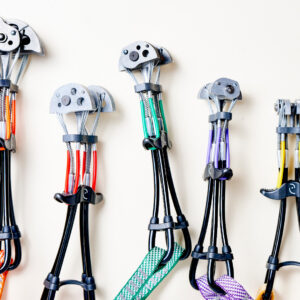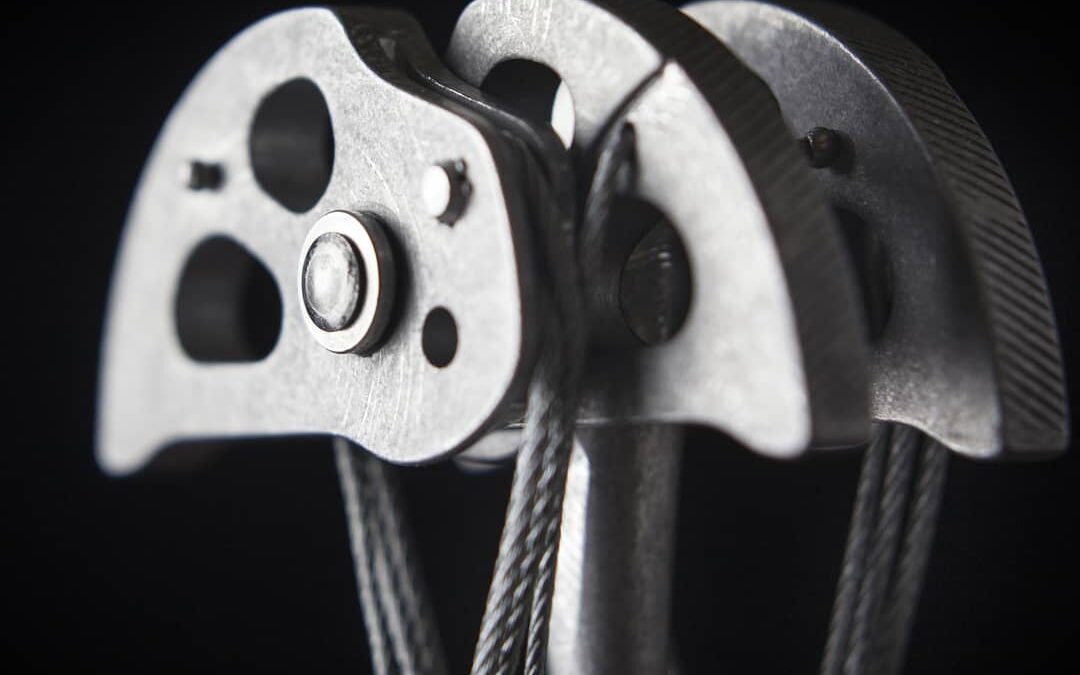 Making the Leap from Sport to Trad Climbing with Totem Cams
Making the Leap from Sport to Trad Climbing with Totem Cams
So, you’re a sport climber who’s tired of clipping bolts and ready to place your own gear? Welcome to the world of trad climbing—where reading the rock, placing solid protection, and building anchors become part of the adventure.
But transitioning from sport to trad can be intimidating:
✅ How do you choose the right trad climbing equipment?
✅ How do you know if your placements are solid?
✅ What’s the best way to start leading trad routes safely?
In this guide, we’ll break down how to transition from sport to trad climbing, what gear you need for your first rack, and how to build confidence placing your own protection.
1. Understanding the Key Differences Between Sport & Trad Climbing
Before you start racking up cams, it’s important to understand how trad differs from sport climbing.
| Feature | Sport Climbing | Trad Climbing |
|---|---|---|
| Protection | Bolts pre-placed | You place your own gear |
| Gear Needed | Quickdraws, rope, belay device | Cams, nuts, slings, carabiners, cordelette |
| Falls | Generally safe, with solid bolts | Gear placements must be bomber |
| Anchors | Bolted belay stations | Must build your own |
| Mindset | Athletic & gymnastic | Technical, calculated, and gear-focused |
💡 Key Takeaway: In sport climbing, protection is already there. In trad, you create your own safety system.
2. Essential Gear: What You Need for Your First Trad Rack (Totem Cams, of course!)
Building a trad rack can feel overwhelming—but you don’t need to buy everything at once.
The Core Trad Climbing Equipment You’ll Need
✔️ Spring-Loaded Camming Devices (Cams) – The backbone of any trad rack.
✔️ Nuts & Stoppers – Essential passive protection for cracks.
✔️ Slings & Alpine Draws – Prevent rope drag and extend placements.
✔️ Locking Carabiners – For belaying and anchor building.
✔️ Nut Tool – To remove stubborn gear.
✔️ Cordelette – For equalizing anchors.
✔️ Belay Device (with Guide Mode) – For belaying from above.
💡 Pro Tip: Totem Cams are the best choice for new trad climbers—they provide superior holding power in tricky placements, making them more forgiving than standard cams.
 3. The Best Cams & Nuts for a Beginner Trad Rack
3. The Best Cams & Nuts for a Beginner Trad Rack
You don’t need a full double rack to start trad climbing. Here’s a basic first rack to get you leading safely.
Cams (Spring-Loaded Camming Devices)
| Cam Color | Best for Crack Size | Recommended Cams |
|---|---|---|
| Black | Small fingertip cracks | Totem Cam Black, BD X4 |
| Blue | Thin fingers | Totem Cam Blue, BD Camalot C4 0.3 |
| Yellow | Finger cracks | Totem Cam Yellow, BD C4 0.4 |
| Purple | Thin hands | Totem Cam Purple, BD C4 0.5 |
| Green | Hands | Totem Cam Green, BD C4 0.75 |
| Red | Wide hands | Totem Cam Red, BD C4 1.0 |
💡 Best Starter Cams: Totem Cams (Blue, Yellow, Purple, Green, Red) provide the best grip and security for beginner trad leaders.
Nuts & Passive Protection
✔️ A full set of nuts (Black Diamond Stoppers, DMM Wallnuts) – For constrictions in cracks.
✔️ Offset nuts (DMM Peenuts) – Best for flared cracks.
✔️ Hexes (Optional) – Can replace larger cams in some routes.
💡 Pro Tip: Use nuts before cams—they’re cheaper, lighter, and just as strong when placed correctly.
 4. Where to Start: The Best First Trad Climbs
4. Where to Start: The Best First Trad Climbs
Not all trad routes are good for beginners! Start with well-protected, easy routes before taking on runout slabs or committing cracks.
Best Trad Areas for Beginners
✅ The Gunks, NY – Short, well-protected routes with horizontal cracks.
✅ Joshua Tree, CA – Great for learning gear placements (but some routes are runout).
✅ Eldorado Canyon, CO – Easy routes with excellent gear options.
✅ North Conway, NH – Friendly granite cracks with solid protection.
✅ Squamish, BC – Bomber granite cracks that protect well.
💡 Pro Tip: Check out Mountain Project or a local guidebook for routes labeled “G” (good protection). Avoid routes marked “PG-13” or “R” (runout or spicy gear placements).
5. How to Practice Placing Gear (Before You Lead!)
Before jumping on your first trad lead, spend time placing gear on the ground and testing its strength.
How to Practice Safe Gear Placements
✅ Go to a climbing area with cracks and place gear while on the ground.
✅ Clip a sling into your placements and weight them.
✅ Mock lead on a top rope while placing gear—get used to making placements under pressure.
✅ Have an experienced trad climber inspect your placements for safety.
💡 Pro Tip: Take a trad climbing course or climb with an experienced trad leader who can critique your placements.
6. How to Build Your First Trad Anchor
Once you finish a trad route, you’ll need to build your own anchor.
Basic Trad Anchor Setup (Using Totem Cams & Nuts)
1️⃣ Place at least 2-3 pieces of solid gear (cams or nuts).
2️⃣ Equalize the pieces using a cordelette or slings.
3️⃣ Tie a master point for clipping in.
4️⃣ Use a locking carabiner to connect to the master point.
💡 Pro Tip: Follow the SERENE anchor principles:
✅ Strong (each piece must hold a fall)
✅ Equalized (load distributed evenly)
✅ Redundant (always use 2+ pieces)
✅ Extended (reduce rope drag)
✅ No Extension (if one piece fails, the anchor still holds)
 7. Your First Trad Lead: Tips for Success
7. Your First Trad Lead: Tips for Success
When you finally lead your first trad climb, keep these golden rules in mind:
✔️ Place gear often—better safe than sorry!
✔️ Use a mix of nuts and cams—don’t rely on cams alone.
✔️ Extend your placements to prevent rope drag.
✔️ Climb at least 1-2 grades below your sport climbing ability.
✔️ Double-check your anchor before committing to a rappel.
💡 Pro Tip: Bring an experienced trad climber as your second to check your placements and provide feedback.
Final Thoughts: Your Path to Becoming a Trad Climber
Transitioning from sport to trad climbing is a big step, but it’s also one of the most rewarding journeys in climbing. With the right trad climbing equipment, knowledge, and practice, you’ll gain the confidence to place your own protection and tackle bigger adventures.
Quick Recap: How to Transition from Sport to Trad
✅ Build a simple first rack (Totem Cams, nuts, slings, carabiners).
✅ Start with well-protected trad routes (check Mountain Project for “G” rated climbs).
✅ Practice gear placements on the ground before leading.
✅ Learn anchor-building skills before committing to multi-pitch routes.
✅ Take your time, stay safe, and enjoy the adventure!
📢 Ready to start trad climbing? Check out our selection of Totem Cams and get the best gear for your first rack!
